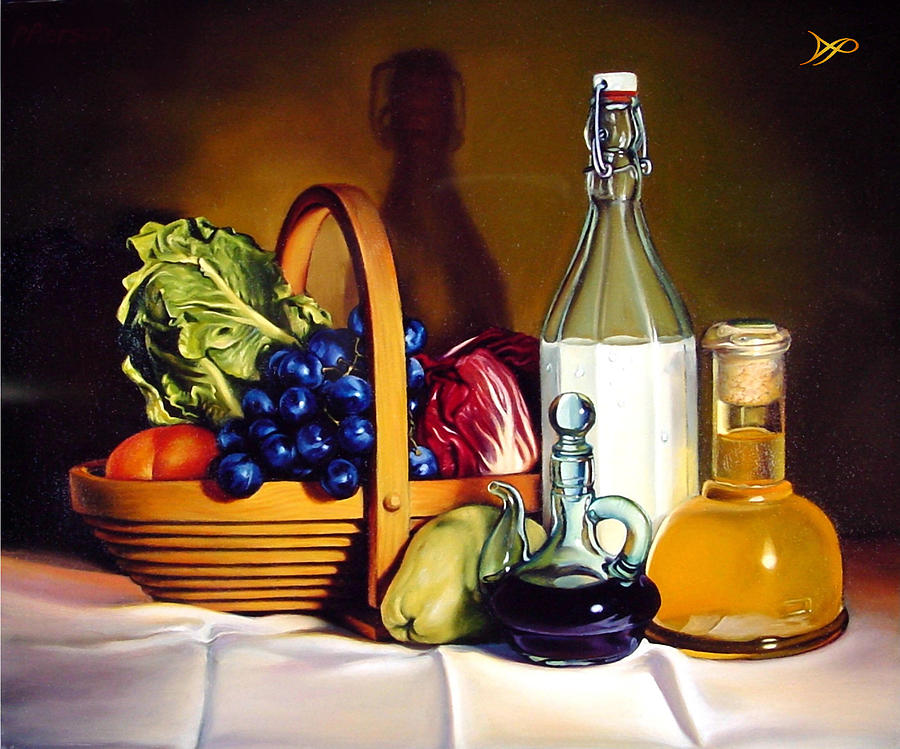Oil Paintings for Sale Featuring Renowned World-Class Creators
Oil Paintings for Sale Featuring Renowned World-Class Creators
Blog Article
Discovering Everything About Oil Paintings: A Guide to Understanding Their Appeal and Worth
Oil paintings have captivated target markets for centuries, using a look into the artistic mastery of numerous ages. Their rich history is linked with ingenious methods and profound psychological expression. Comprehending the materials and approaches behind these art work can enhance appreciation. In addition, the marketplace for oil paintings presents chances for capitalists and collection agencies alike. As one explores this remarkable world, the question develops: what makes an oil painting absolutely useful?
The History of Oil Painting: A Journey Through Time
Oil painting has origins that date back to old times, it really prospered during the Renaissance, when artists uncovered its flexibility and abundant shade potential. Early examples can be traced to the 7th century, with methods evolving significantly across cultures. The tool ended up being noticeable in Northern Europe in the 15th century, particularly via the works of artists like Jan van Eyck, that pioneered its use for thorough realistic look and vivid tones. This duration marked a departure from tempera paints, enabling for better deepness and texture. As oil painting spread, it affected countless artists, bring about masterpieces by popular figures such as Leonardo da Vinci and Rembrandt. The medium's tradition proceeds, forming the art globe well into modern times.
Comprehending Oil Repaints: Products and Techniques
As musicians explore the globe of oil paints, they encounter a diverse range of products and methods that specify this tool. The key parts of oil paint consist of pigments, which supply color, and drying out oils, such as linseed, that bind the pigments and assist in application. Numerous ingredients can change the paint's texture and drying time, enhancing convenience. Techniques like glazing, where transparent layers are developed up, and impasto, which includes applying thick paint, enable for different visual impacts. Furthermore, making use of brushes, combination knives, and even fingers can produce special structures and surfaces. Comprehending these techniques and materials makes it possible for musicians to totally share their creativity and attain the wanted effect in their artwork.
The Role of Color in Oil Paintings
Shade plays an essential function in oil paintings, affecting both visual appeal and psychological resonance. Recognizing color concept basics, consisting of the partnerships between colors, can improve an artist's capacity to communicate mood and ambience. Furthermore, mastering shade mixing strategies permits better depth and splendor in a painting's scheme.

Shade Theory Basics
Understanding shade theory is important for artists collaborating with oil paints, as it forms the structure for producing unified and aesthetically appealing make-ups. Shade theory includes the study of exactly how shades connect, the color wheel, and the relationships between key, secondary, and tertiary colors. Musicians utilize complementary colors to boost contrasts and create focal factors, while similar colors advertise unity and cohesiveness within an item. Furthermore, the ideas of warm and trendy shades affect the understanding of depth and space in a painting. Comprehending these concepts allows musicians to manipulate color effectively, guiding the customer's eye and connecting their designated message. Proficiency of shade concept eventually enhances a musician's capacity to share emotions and concepts through their work.
Emotional Effect of Color
The psychological effect of color in oil paints plays an essential function in exactly how visitors perceive and connect with artwork. Colors evoke details sensations and state of minds, affecting the visitor's mood. Cozy tones like reds and oranges can create a feeling of heat and power, while cool tones such as blues and eco-friendlies often evoke calmness or introspection. Artists strategically choose shade schemes to boost narrative aspects, leading the target market's psychological journey. The saturation and contrast of colors even more amplify these effects, drawing interest and producing emphasis. Ultimately, the interaction of colors in oil paints not just boosts their aesthetic appeal but also functions as a powerful medium for emotional expression, enriching the viewer's experience and interpretation.
Color Mixing Techniques
While numerous elements of oil painting add to the overall composition, mastering color blending strategies is vital for accomplishing preferred impacts and depth. Color blending can be come close to via different approaches, consisting of the subtractive and additive procedures. Additive blending includes combining colors of light, while subtractive mixing depends on pigments, where shades blend to produce new tones. Musicians commonly use a restricted combination to create harmonious works, understanding the relationships between key, secondary, and tertiary colors. Strategies such as glazing and scumbling better boost depth and luminosity. By skillfully blending colors, a musician can evoke feelings, create prime focus, and accomplish a sense of realism, inevitably raising the painting's visual and emotional influence.
Famous Oil Painters and Their Iconic Works

Renowned for their proficiency of shade and technique, oil painters have created some of the most renowned art work in background. Distinguished artists like Vincent van Gogh captivated audiences with his emotive brushwork in "Starry Night," while Claude Monet's "Impression, Dawn" laid the groundwork for Impressionism. Leonardo da Vinci's "Mona Lisa" stays a long-lasting sign of creative wizard, showcasing his ability in capturing human expression. On the other hand, Rembrandt's "The Evening Watch" shows his ingenious use light and shadow. Other noteworthy figures include Pablo Picasso, that revolutionized contemporary art with his vibrant trial and error in works like "Les Demoiselles d'Avignon," and Georgia O'Keeffe, whose vibrant depictions of landscapes and flowers helped define American innovation. Each musician's distinct design contributed greatly to the oil paint landscape.
Just how to Examine the High Quality of an Oil Painting
Evaluating the top quality of an oil painting involves a mindful evaluation of craftsmanship strategies, in addition to an analysis of shade and make-up. Observing brushwork, layering, and the application of paint can disclose the artist's skill level. Furthermore, the interaction of colors and the overall arrangement of components add substantially to the paint's aesthetic worth.
Evaluating Workmanship Techniques
A meticulous assessment of workmanship techniques is crucial for figuring out the quality of an oil painting. Critics must first check out the application of paint; thick, distinctive brushstrokes may recommend an experienced hand, while extremely consistent applications could show an absence of depth. oil paintings for sale. The layering strategy is likewise vital; the visibility of glazes and differed thickness can enhance luminosity and intricacy. Additionally, the high quality of the products utilized, such as the canvas and pigments, plays a significant duty in sturdiness and overall visual. Attention to information in aspects like edges and changes between shades reflects the musician's commitment to their craft. Eventually, these techniques add to the paint's emotional effect and market worth, functioning as indicators of the musician's skill and intent
Assessing Shade and Make-up
While evaluating the quality of an oil paint, one must concentrate on the interaction of color and make-up, as these elements are fundamental to the artwork's general effect. Shade options can establish and stimulate emotions mood; therefore, the artist's combination must be examined for harmony and contrast. A well-balanced composition directs the visitor's eye and creates a feeling of unity. Musicians often employ techniques like the rule of thirds or leading lines to enhance aesthetic passion. In addition, the usage of light and darkness can add depth, enhancing the three-dimensionality of the painting. Inevitably, an effective oil paint marries color and composition, involving the customer and inviting a deeper appreciation of the artist's vision and technique.
Caring for and Preserving Oil Paintings
Appropriate treatment and conservation of oil paints is necessary for keeping their honesty and long life. To protect these artworks, it is vital to display them away from direct sunlight, which can cause fading and discoloration. Maintaining a secure atmosphere with regulated temperature and humidity additional aids in stopping damages. Cleaning up must be done carefully utilizing a soft, dry cloth, avoiding any kind of extreme chemicals that could damage the paint or varnish. Routine inspections for indications of wear and tear, such as cracking or flaking, are recommended. When storing or moving oil paintings, appropriate cushioning and framing are necessary to stay clear of physical injury. Eventually, diligent treatment adds to the visual allure and worth of oil paintings with time.
The Marketplace for Oil Paintings: Accumulating and Spending
Comprehending the market characteristics for oil paintings is important for enthusiasts and financiers alike. The value of these art work is affected by various variables, consisting of the artist's reputation, historical significance, and current patterns. Enthusiasts usually look for pieces that reverberate directly while thinking about prospective admiration in value. Auctions and galleries act as key venues for trading, with costs rising and fall based on demand and rarity. Investing in oil paints requires research study right into the marketplace, as well as an understanding of authenticity and provenance. Additionally, emerging artists may provide chances for substantial returns, while developed names can regulate high rates. In general, a calculated strategy to accumulating can generate both visual satisfaction and economic incentives.

Often Asked Concerns
What Are the Ecological Influences of Oil Painting Materials?
The environmental effects of oil paint products consist of the launch of unpredictable organic compounds (VOCs), dangerous waste generation, and source removal for pigments. These factors contribute to pollution and ecological deterioration, increasing issues among ecologically mindful artists and consumers.
Exactly How Do Different Canvases Influence Oil Painting Results?
Various canvases influence oil painting results considerably. Texture, surface area, and absorbency top quality oil paintings for sale can modify paint application, drying times, and shade vibrancy. Musicians usually pick details canvases to attain preferred impacts and enhance their artistic expression.
Can Oil Paintings Be Recovered if Damaged?
Oil paints can without a doubt be recovered if harmed. Expert conservators utilize numerous methods to repair tears, tidy surfaces, and address discoloration, guaranteeing that the artwork preserves its original beauty and value for future generations.
What Are the Indicators of an Original Oil Painting?
The indicators of an original oil paint include noticeable brush strokes, appearance variants, and an irregular canvas weave (oil paintings for sale). In addition, credibility might be validated via provenance, trademarks, and the visibility of a varnish layer one-of-a-kind to oil tools
Just How Has Technology Influenced Modern Oil Paint Techniques?
Modern technology has greatly influenced modern oil paint strategies by presenting electronic tools for planning, enhanced products for appearance and long life, and on the internet systems for offering and sharing art, thus expanding artists' imaginative opportunities and target market reach. Oil painting has origins that date back to old times, it really thrived during the Renaissance, when musicians found its flexibility and rich shade possibility. The psychological effect of shade in oil paintings plays a critical duty in exactly how audiences perceive and attach with art work. While numerous aspects of oil paint contribute to the overall make-up, mastering shade mixing techniques is crucial for accomplishing desired results and depth. Evaluating the top quality of an oil painting entails a cautious assessment of workmanship techniques, as well as an evaluation of color and make-up. While examining the high quality of an oil painting, one must concentrate on the interaction of color and composition, as these aspects are fundamental to the art work's total effect.
Report this page